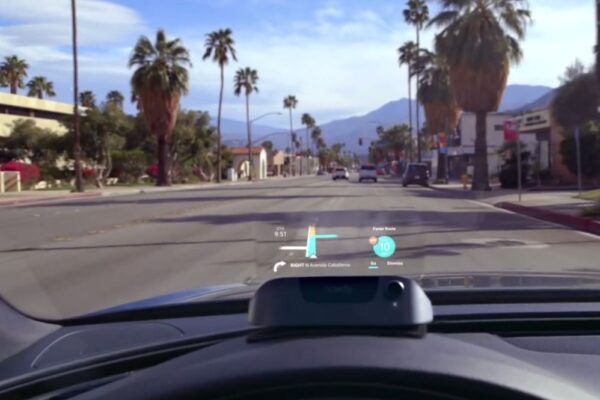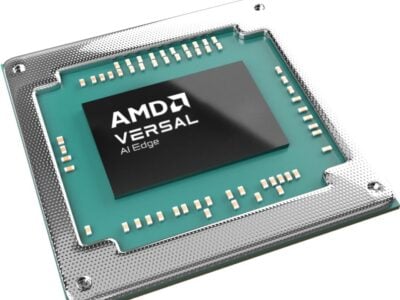
Harman also made an undisclosed sum of money in Navdy.
Connected to a car via an OBD (On-Board Diagnostic system)-II port and designed to talk to the driver’s smartphone via Bluetooth, Navdy’s HUD projects car, phone, and music information as a transparent image on the windshield, directly over the road. The deal with Harman will give Navdy’s heads-up driving technology a broad set of distribution channels ranging from aftermarket to automotive OEMs, Tier Ones, and telecom operators.
Harman’s credibility and close ties to the automotive industry are a huge boost for the three-year-old startup.
For Harman, the deal illustrates the company’s upstream strategy. It helps Harman provide customers with “end-to-end connected experiences,” explained Jeffery Fay, vice president and general manager of aftermarket services at Harman. Harman’s broad business spans connected cars, lifestyle audio, professional audio/video/lighting solutions, and connected services. Harman’s connected services include over-the-air updates and cyber security solutions, said Fay. Navdy’s device will become one more platform allowing Harman to offer consumers and OEMs connected services.
Who is Navdy?
Navdy, founded in 2013, is headed by Doug Simpson, originally from Hewlett Packard. The company has a team of 75 engineers and scientists with expertise that ranges from computer vision to optics and machine learning. Many are Apple alumni. Navdy believes its new product is no ordinary HUD. It’s so small that it can fit easily on a dashboard. It works under almost any lighting conditions. Even when the car faces into direct sunlight, the HUD image is clear. Polarized glasses worn by a driver cause no problems, either.

Navdy’s transparent image is purposely projected into the distance so that the road stays in focus while the driver views the information.
What impressed Harman most is the simplicity of Navdy’s user interface. Harman’s Fay said that Navdy has “figured out a very natural, safer way for drivers to access information.”
The HUD display isn’t cluttered with information. It can project only types of information that the individual driver prefers.
While navigation information from Google Maps and traffic information from HERE are on display, a user can choose the items from his smartphone to be transferred to the HUD.
The HUD is connected to a vehicle via an OBD-II port, enabling it to bring in vehicle information such as speed and fuel level. The HUD also comes with a gesture recognition sensor so that a driver’s simple left-to-right swipe hand gesture, for example, can let the driver answer a call.
Inside Navdy’s box
The basic principle of Navdy’s HUD is its combination of information generated by the Navdy app installed in a smartphone, as well as vehicle data coming from OBD-II and from radio, including satellite radio.
Asked about processor power inside the Navdy box, Navdy’s CEO Simpson explained, “Think of it as if it’s got a tablet computer built inside.”
Navdy comes with its own high-quality GPS, but the combination of a number of sensors, including accelerometer and gyro, will allow Navdy to know exactly where it is, even in tunnels or parking lots where no GPS signals are available, he explained.
The Navdy box also features a custom-developed camera so that it can see gestures by a driver.
Today, the only gesture that Navdy recognizes is a simple swipe. “The learning curve for that will be zero,” said Simpson. More gestures will come later, he added.
At the core of the Navdy box, there is “a heavily customized Android,” according to Simpson, on which Navdy apps run. Navdy phones are available both for iPhones and Android phones.
First aftermarket HUD
All said and done, Navdy’s claim to fame is “the world’s first aftermarket heads-up driving device,” according to the company.
Mark Boyadjis, principal analyst & manager, Automotive User Experience at IHS Markit, called the Navdy product “a viable, full-featured HUD that can be added onto just about any vehicle on the road today, new or used.”
Cars built before 1996 that feature no OBD-II port won’t work with Navdy. But there is a way to use a 12-V adapter to make adjustments. Navdy’s CEO told EE Times, “Navdy is compatible with 93% of cars — except for some exotic cars with limited space on the dash — such as Ferrari.”
Boyadjis explained, “The HUD in general is relatively nascent in the factory-installed market, let alone the after-sale marketplace.”
IHS pegs the size of the HUD market in the United States at 688,000 in 2016. That, however, is projected to grow to 2.5 million units in 2022.
Noting that 55% of those most likely interested in purchasing a new vehicle in the United States want HUDs, the analyst said, “Navdy could take advantage of the high customer demand to grow the public awareness of HUDs and their sale at the same time.”
What has prevented the HUD market from growing thus far in the United States? Boyadjis said, “Cost, size, and value.”
As to cost, he said, “Components to develop, manufacture, and install HUDs have been incredibly expensive, forcing automakers to offer them on only high-trim, premium-level vehicles.” However, these costs are coming to a point at which OEMs can rationalize an HUD option in vehicles like Mini Cooper, Volkswagen Passat, or Mazda CX5, he added.
Size is a big factor. According to Boyadjis, “Due to the physics at play in windscreen HUDs, OEMs were often restricted to offering HUDs (if the costs were palatable) on vehicles with a large-enough dashboard to fit a 2- or 3-liter automotive component into. That was simply impossible to fit into a small A, B, or even C-segment vehicle for many years.” He added, “Sizes have come down, primarily as combiner HUDs became more viable as an option, requiring MUCH less volume in the vehicle’s instrument panel.”
Then there’s the issue of value. “Early HUDs offered limited end-customer appeal. A monochrome digital read-out of speed and tachometer gave little rationale to anyone but a Corvette driver,” the analyst said.
Now, HUDs can “offer an incredible amount of content through their full-color, high-resolution displays,” he said. “Plus, with the increasing deployment ADAS systems like collision avoidance and lane departure systems, the HUD becomes even more valuable to the end user as a line-of-sight display for safety systems,” he added.
In his opinion, Navdy can address many of these issues.
What’s still missing?
Boyadjis predicted that the next step for Navdy should be better integration into vehicles — like a vehicle’s Advanced Driver Assistance Systems (ADAS) or infotainment systems.
Today, Navdy has no ability to tap into ADAS-based safety systems, he said. Navdy could also be improved by integrating better with OEM infotainment systems and GUI. “When you’re running a Navdy in a vehicle, in many ways, it feels like its own infotainment system. This is a good thing if you have a 10-year-old vehicle, but it feels disjointed when used in a newer vehicle with its own full-featured infotainment system,” Boyadjis observed.
— Junko Yoshida, Chief International Correspondent, EE Times
 If you enjoyed this article, you will like the following ones: don't miss them by subscribing to :
eeNews on Google News
If you enjoyed this article, you will like the following ones: don't miss them by subscribing to :
eeNews on Google News



